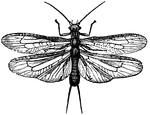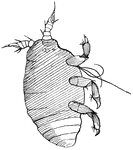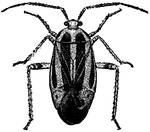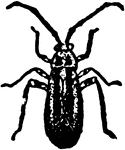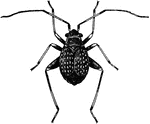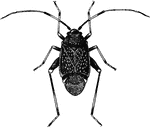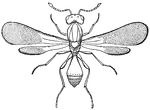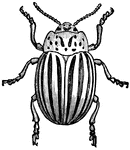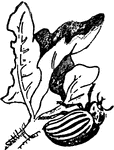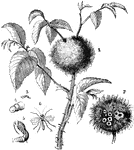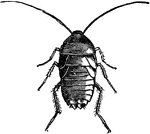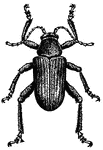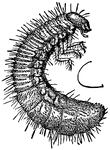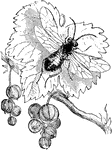This gallery includes 949 illustrations of other orders of insects.

Peripatus Dissection
"Dissection of Peripatus. at., Antennae; or.p., oral papillae; c.g., cerebral ganglia; sl.d., duct of…

Larva of Perla Bicaudata
"An insect among the Neuroptera, which undergo incomplete metamorphoses. These flutter about the banks…

Larva of Perla Marginata
"An insect among the Neuroptera, which undergo incomplete metamorphoses. These flutter about the banks…
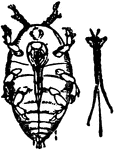
Phylloxera
"Pylloxera is a genus of insects allied to the Aphis and Coccus families. The Phylloxeridæ attach…
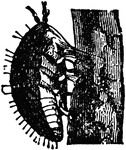
Phylloxera
"Pylloxera is a genus of insects allied to the Aphis and Coccus families. The Phylloxeridæ attach…
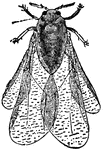
Phylloxera
"Pylloxera is a genus of insects allied to the Aphis and Coccus families. The Phylloxeridæ attach…

Phylloxera
A genus of lice classed with the aphidae, which feed as parasites on different kinds of plants. The…

Phylloxera Galls on Chestnut
Pictured are phylloxera galls on chestnut. Insect larvae cause malformations or swellings of the leaves…

Phylloxera-mite
A phylloxera. Typically found in eastern North America, and related to the aphid, they typically feed…

Phytocoris
A genus of plant bugs, having the beak extending to the middle of the abdomen and the sides of the head…
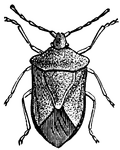
Plant-bug
Dotted leg plant-bug, one of many different heteropterous insects which suck the juices of plants.

Planthopper
Otiocerus coquebertii, a small insect of a somewhat elongated form and having a small projection in…
!["The larvae of [Saperda populena] live in gall-like swellings in the branches [of poplar]."—Nicholson, 1884](https://etc.usf.edu/clipart/79000/79089/79089_populena_mth.gif)
Saperda Populena
"The larvae of [Saperda populena] live in gall-like swellings in the branches [of poplar]."—Nicholson,…
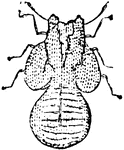
Larva of Psylla Pyrisuga
The larva of psylla pyrisuga live on pear trees and sometimes apple trees. The larvae suck the juice…

Blackberry Psyllid
The Blackberry Psyllid (Trioza tripunctata) is an insect that feeds on specific plants.
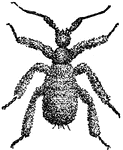
Pupa of Reduvious Personatus, Covered with its Cloak of Dust
"By means of its disguise, it can approach little animals which become its prey, such as flies, spiders…
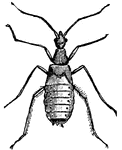
Pupa of Reduvious Personatus, Denuded of its Cloak of Dust
"By means of its disguise, it can approach little animals which become its prey, such as flies, spiders…

Rocky Mountain Locust
Rocky Mountain Locust. A) female in different positions, B) egg sac, C) loose eggs, D) and E) earth…

Corn Rootworm
A destructive insect of corn. Also called a cucumber beetle. Diabrotica is the name of the genus with…
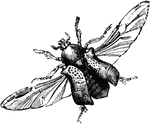
Rose Chafer with Hind Wings Extended
The body of the rose chafer is encased with a hard crust. The front wings are modified to form hard…

San Jose Scale
Pictured is the mature winter scale. Also shown is the insect itself with it threadlike feeding organs.
Sandworm
"A small class of Articulated Animals, mostly included by Linnaeus in his class Verimes. They have a…

Larvae of Rose Sawfly
A parasite which feeds as larvae in rose-twigs or upon the leaves. Some species are confined to roses…


